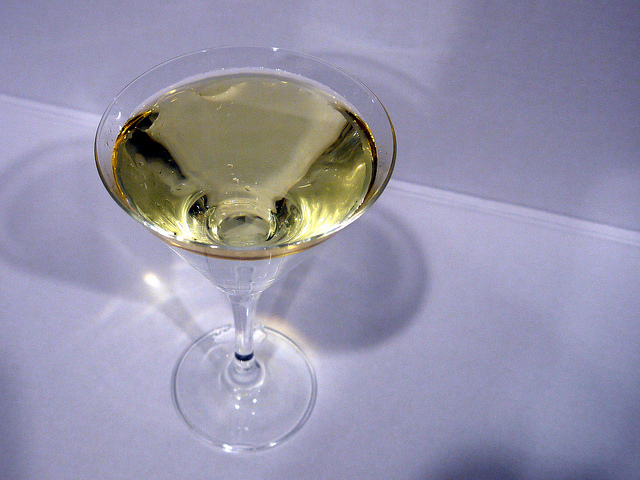Podcast: Play in new window | Download
Subscribe: RSS

An oil-and-water cocktail is hard to burn and nasty to drink, but the Saudis, running out of both, are drinking hard and burning bright. (Photo by Yortw/Flickr)
While the industrialized world approaches the brink of peak oil — the point at which supply can no longer, ever, meet demand — the supplier of much of that oil, Saudi Arabia, is teetering on the brink of peak water. With increasing desperation, the kingdom is juggling the rising, competing demands for its limited water supplies, and trying to repeal the iron laws of supply and demand.
With its growing population living large, and its industrialists ramping up their economies of scale, Saudi Arabia uses water at an average rate per person that is twice that of the rest of the world. And it is of course a desert that receives a scant four inches of rain per year. So it has been sucking up its aquifers, which contain a finite amount of fossil water, deposited in earlier eons. And the Saudis have been squandering their water with exactly the same lack of regard for consequences as the rest of the world has shown while squandering its finite amount of fossil fuel.
But wait, there’s more. The Saudis feverishly supplement their wells with desalinated seawater, of which they produce 887 million gallons a day. That contribution of something less than ten per sent of the Kingdom’s water needs is a lose-lose-lose situation:
- Water desalination is an energy-intensive operation, and the energy comes from oil and natural gas, either directly or in the form of electricity produced with oil and gas. The Saudis’ appetite for their own oil has doubled in the past two years.
- In order to avoid peak water, the Saudis are hastening the approach of peak oil, by keeping off the international market a growing share of their oil production.
- At the same time that the consumption of oil for water desalination reduces the kingdom’s income, it increases its costs, because the Saudis charge their citizens much less for a gallon of water than it cost to desalinate it. They also subsidize their citizens’ oil, gas and electricity prices. The subsidies — gas, for example, costs about 12 cents per liter — mean wildly increased consumption.
So, let’s review: running low on water, using more water, running low on oil, using more oil for water, losing revenues, increasing expenditures. Unless mathematics has been repealed by the Republican Congress, all these trends point to a day in the not-so-distant future when the Saudis will be catastrophically short of water, oil and cash.
How soon? Well, the kingdom currently produces about 8 million barrels of oil per day, and uses 3.2 million barrels per day. It will be using 8million barrels a day, its entire present production, by 2028, according to Hashim Yamani, president of the King Abdullah Atomic and Renewable Energy City (quoted in the Financial Times).
Here comes another Arab spring.
[Even more aspects of the Saudis’ problem, including the intertwined effects on agriculture and mining, are detailed in this Reuters report.]
-0-
[For updates on this and other Daily Impact stories, and for short takes on other subjects, check out The Editor’s Log.]